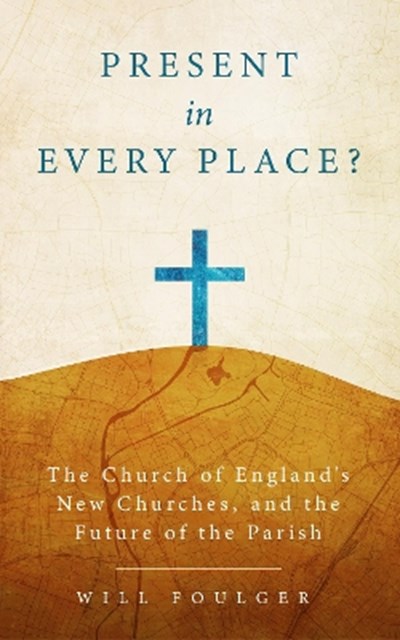Present in Every Place?: The Church of England’s new churches, and the future of the parish
Will Foulger
SCM Press £25
(978-0-334-06203-5) 117pp
I live and work in Salisbury with a population of about 70,000. There are seven benefices and at least eighteen places where Anglican worship is offered. The city is dominated by the soaring spire of our Cathedral. I live in one parish, work in another and worship in a variety of places. We are people who move, with lives that are less settled. Our relationship with Church is changing. Combine this with my responsibility to oversee the formation of a new generation of authorised lay and ordained ministers and this is the lens through which I read this insightful, stimulating, carefully researched and written book.
We live in anxious times. Decline is a pervading reality for many parishes, deaneries, and dioceses. Drawing on the work of Friedman, we are reminded that one of the features of an anxious or imaginatively gridlocked system is either-or, black and white thinking (p 9). Foulger navigates this geography with some skill in the holding a passionate belief in the parish together with new worshipping communities.
The book is strengthened by its meticulous referencing. The reader can clearly see the sources for the work. There is an index, but a bibliography might have strengthened its usefulness together with some questions for further consideration at the end of each of the chapters.
Chapter 1 explores some of the issues and instincts at play when we think about place. Foulger has grasped many of the key elements in the literature and there is a quality of critique that moves beyond deconstruction towards a deeper understanding of instinct and place. What is highlighted might be described as weak ecclesiology. We might want to step into a space where we ask, “what is God showing us?” leading to “what is the purpose of Church?” as we narrate our experience and story of the Church today.
Chapter 2 asks the reader see how we might understand each other a little better and therefore hold together the diversity and conflicts present in both her perceptions and arguments. Fidelity to the Anglican tradition takes account of the breadth practise and structure that are always present in our identity. Disagreement is, perhaps, always present.
Chapter 3 looks at place, defined as ‘bounded openness’ and therefore all was being in the process of being formed. Chapter 4 develops the argument that present is not simply about coverage or proximity. It is a guiding value for mission and ministry which requires a mixed ecology, a variety of expressions that can sit together in creative, diverse purposefulness.
While one of the commendable strengths of this book is it brevity contained within four chapters it is weaker on harvesting some of the voices and wisdom of the local church. It might have been stronger if it had offered examples of witness, engagement, and mission – perhaps particularly from the soil of County Durham.
The cantus firmus that holds together both harmony and dissonance, Foulger argues, is the power and possibility of relationality. Ministry in its mode of service, presence and engagement is paying attention to what is there, being close, building connection through relationality. Too often as Christians, we are shaped by secularism and its values through absorption into structures, management, bureaucracy, strategy, and functionalism. We are hardly able to listen to one another let alone the communities we are called to serve. In this box-ticking and moralistic world we are called to keep alive a sense of grace, and, most of all, some sense of the immeasurable. Foulger might well have explored further how others see our presence in place. These may be key factors in the integrity of mission and what structures best support our vocation and enable renewal.
Understandably absent from this persuasive vision grounded in theological and ecclesiological wisdom are a number of areas for further work. They include the question of our financial and human resource which maybe limited and limiting. Might our mission as the Church in England be enabled by becoming ‘smaller’ (and there will be some divergence of perspectives about what that means) at a national, diocesan, deanery, and local level? There are surely serious questions about the sustainability of local ministry in terms of both buildings and ministry? This may also be related to questions about how we care for, train and support the development of lay and ordained ministry. It might be related to the possible scenarios associated with Establishment and Monarchy. At a time when there are ongoing divisive debates about LLF and Safeguarding, these deep conflicts might question the credibility of our presence in the lives of those we seek to serve. We cannot hold secularism wholly to blame for some of the lack of confidence and trust in who we are and what we say we believe in.
I look forward to using this work of our ministry formation and to further theological work from Foulger who has proved himself a generative, versatile and intelligent writer.

